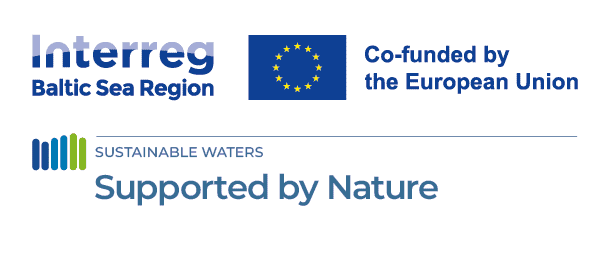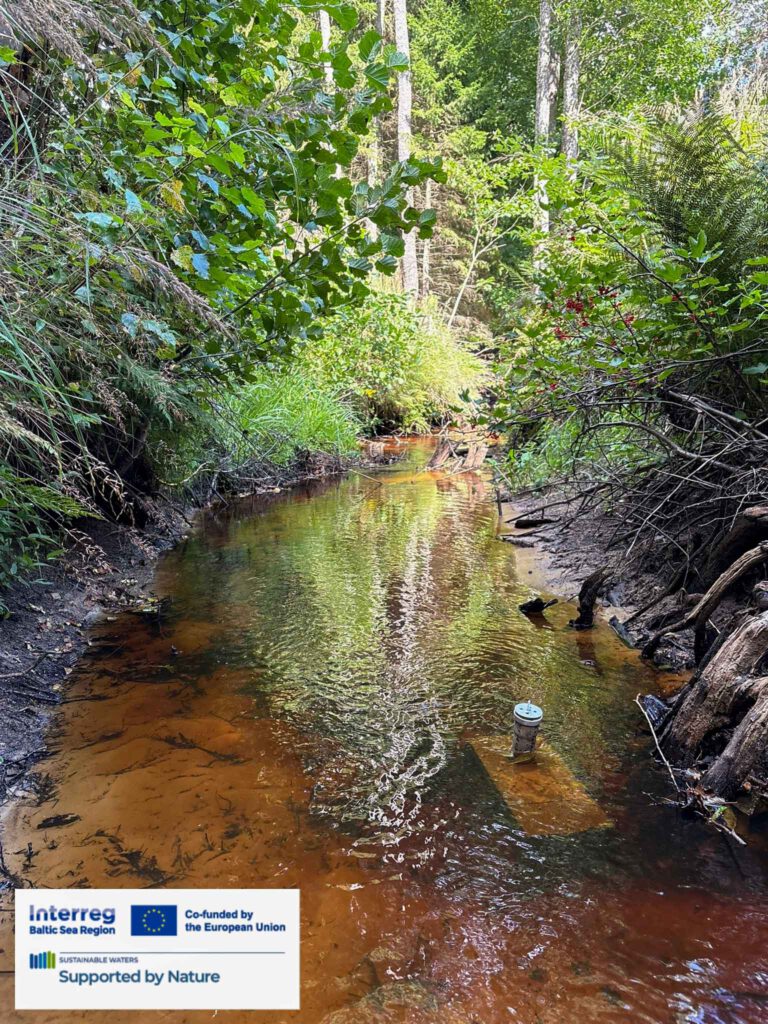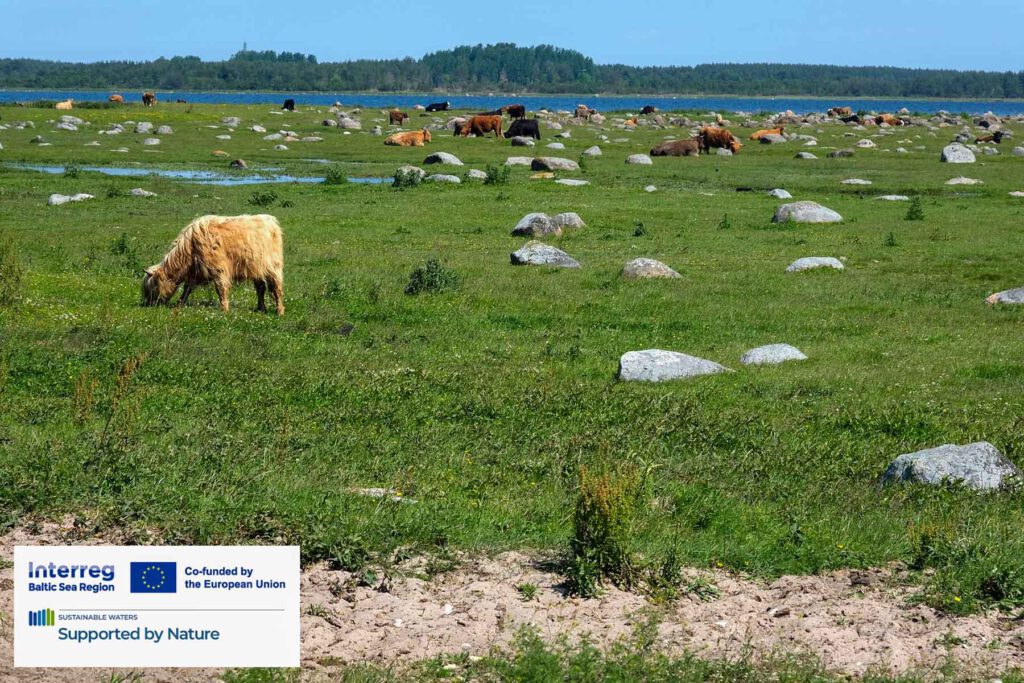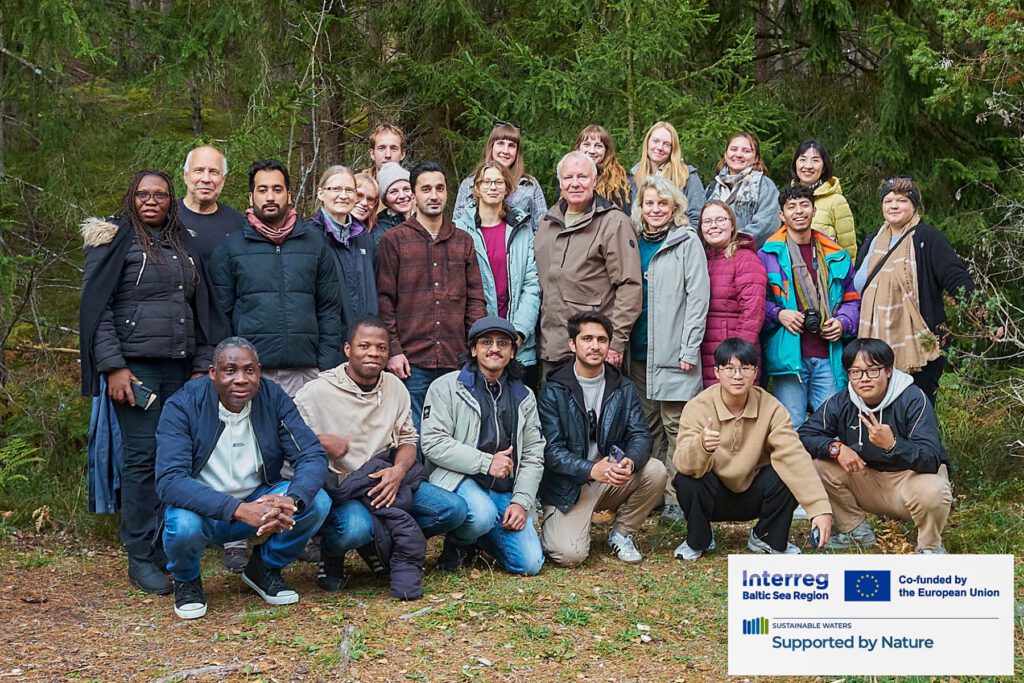
Science meets practice: Student and research engagement in Estonia
11 November 2025
From May 2025 to early summer 2026, PhD student Rauno Künnapuu is studying the Nuutri River catchment to better understand its dynamics and flood risks. The research analyses changes in river gradients, rainfall responses, and how land use affects water retention and flow.
Five automatic sensors record hourly data on water level and temperature, helping identify bottlenecks that may increase flood risk and reveal the role of coastal proximity. By linking hydrology with land use, the study promotes nature-based solutions for flood mitigation and sustainable watershed management, strengthening the resilience of local ecosystems and communities.

In spring 2025, PhD student Vineta Gailite launched her study on how global change affects nutrient cycles in Baltic coastal wetlands. One key site, the Kõrgessaare coastal wetland — a young Natura 2000 meadow formed by tectonic uplift — offers a unique opportunity to observe vegetation colonisation and early ecosystem development. It also serves as a nature-based solution, helping restore biodiversity, sustain ecosystem services, and support species such as migratory birds.
The research combines drone-based vegetation mapping with field surveys, biomass, and soil nutrient analyses to model nutrient cycles and predict ecosystem responses to global change. As part of the learning site of multifunctional wetlands, the study contributes to developing knowledge and tools for sustainable wetland management. In parallel, the team is producing educational resources to support knowledge transfer and raise awareness of coastal meadow restoration.

In early October, first and second year students from the joint MSc programme with Tartu University in curriculum of Environmental Governance and Adaptation to Climate Change participated in a three-day study trip across western Estonia and Hiiumaa Island. The itinerary included a visit to the Viscosa Cultural Factory, a creative hub that attracts many of the same visitors targeted by the Köönaauk learning site. Here, families and cultural event attendees are encouraged to combine their cultural experiences with nature-based activities and hiking. During the trip, students explored the planning and development of learning sites, focusing on integrating diverse objectives and stakeholder interests.

In mid-October, third-year BSc students of the nature tourism curriculum held a four-day field camp in Kõrgessaare. The camp concluded with an analysis of the Köönaauk wetland learning site. The study examined the site’s thematic points, infrastructure, and how well it integrates with the surrounding landscape. Its goal was to evaluate how the area can serve as a setting for learning and experiencing nature through nature-based solutions.
Students found that some information panels could be relocated or combined for better coherence and emphasized adding a citizen science point to allow visitors to contribute to environmental data collection. The panels should include texts in multiple languages, and all materials should be eco-friendly and durable, suitable for wetland conditions.
Seasonal challenges such as slipperiness, flooding, and muddy paths must be considered, with clear safety information provided for visitors. The planning process also highlights the importance of collaboration with local communities and schools to enhance engagement and educational value.

Overall, the Köönaauk site is envisioned as a multifunctional learning environment that brings together nature conservation, cultural heritage, and hands-on environmental education.
Photos: Estonian University of Life Sciences





